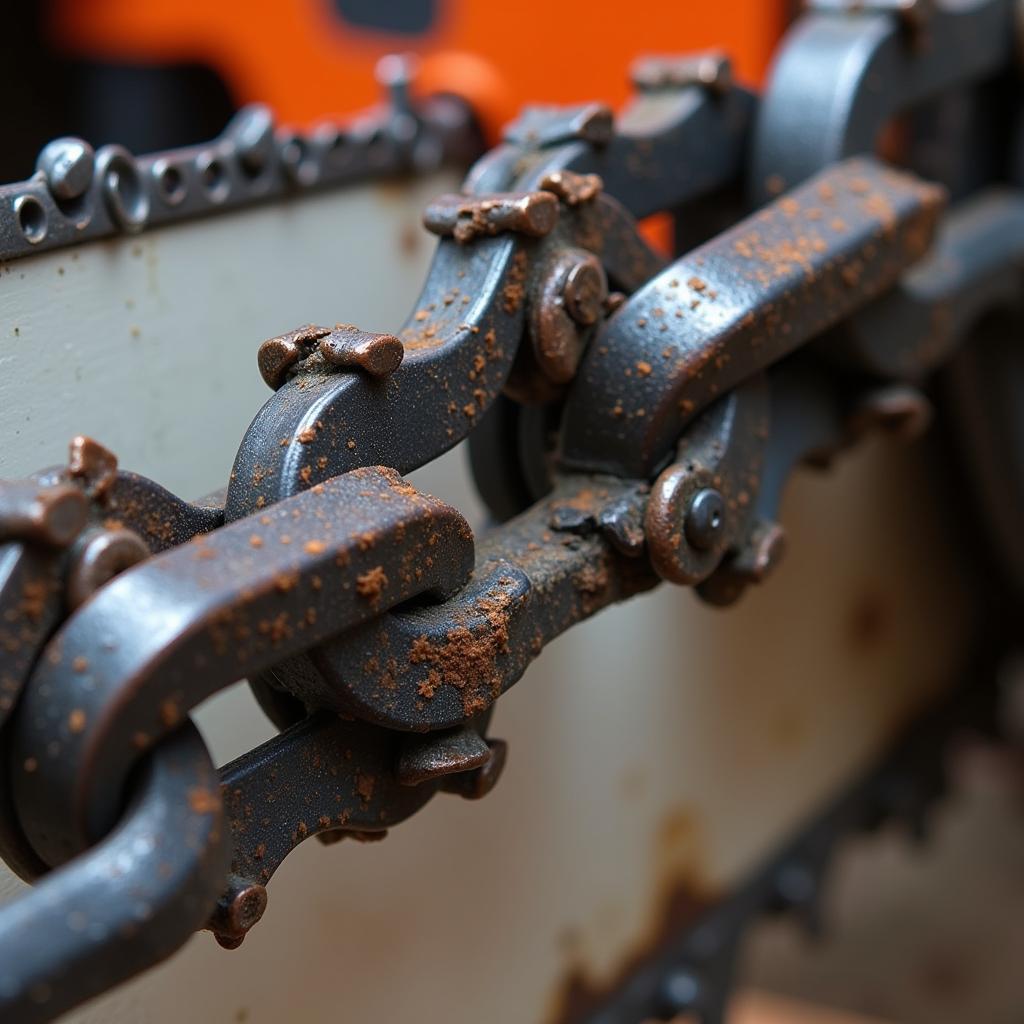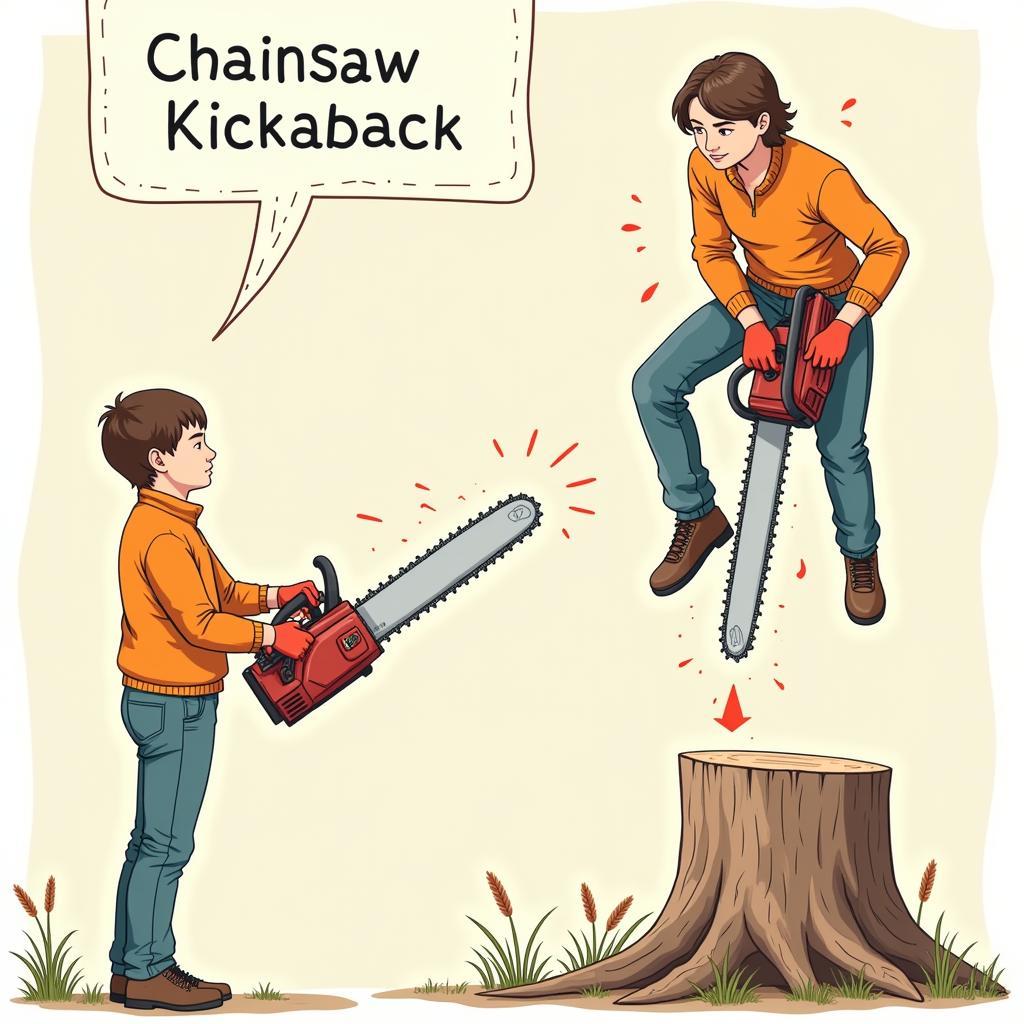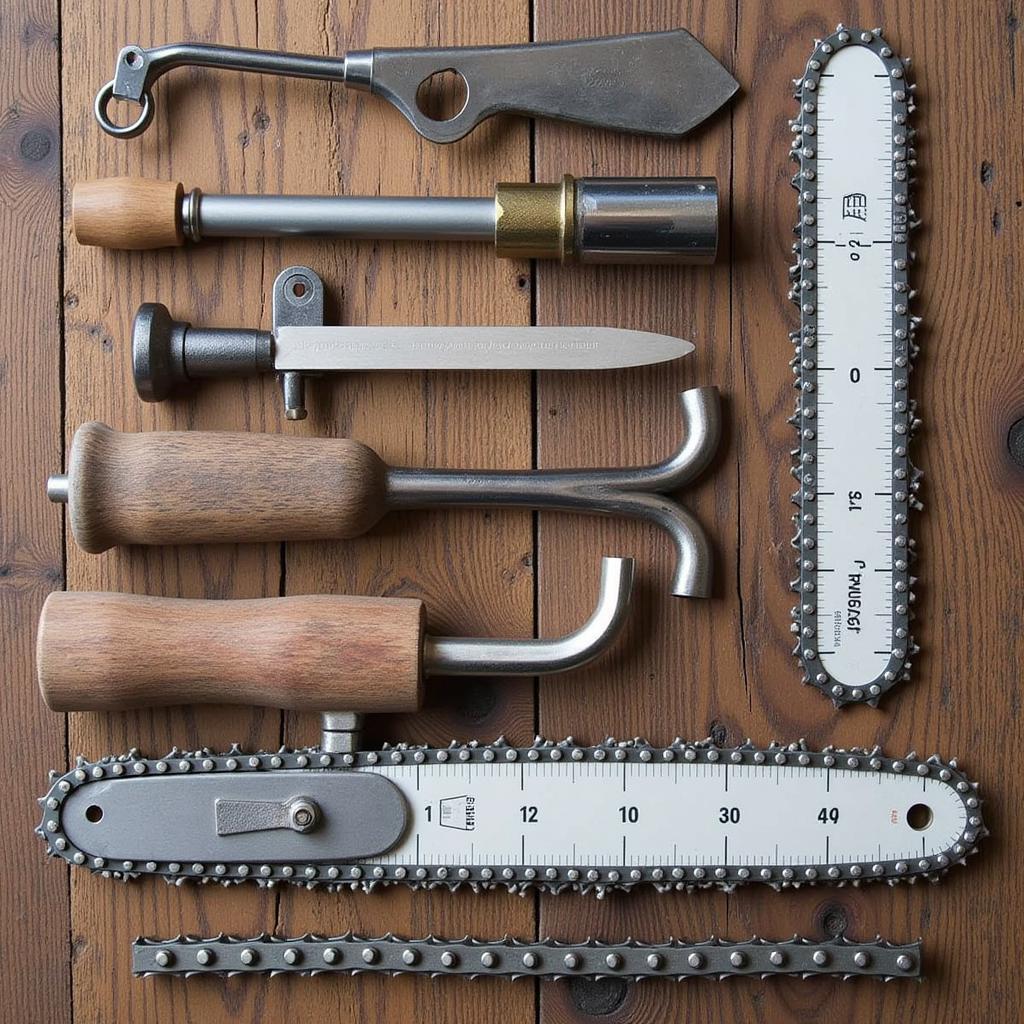Chainsaw Chain Ripping is a dangerous and frustrating experience that no chainsaw user wants to encounter. This occurs when the chainsaw’s chain breaks apart during operation, potentially causing serious injury or damage.
 Chainsaw chain ripped apart
Chainsaw chain ripped apart
What Causes a Chainsaw Chain to Rip?
Several factors can contribute to chainsaw chain ripping, and understanding these causes is crucial for prevention:
1. Chain Tension:
Improper chain tension is a leading cause of chain ripping. A loose chain can derail from the guide bar, increasing the risk of snapping, while an overly tight chain puts excessive strain on the links.
2. Chain Sharpness:
A dull chain requires more force to cut through wood, putting extra stress on the chain itself. This increased friction and force can cause the chain to overheat and weaken, making it susceptible to ripping.
3. Kickback:
Kickback occurs when the chainsaw’s tip unexpectedly kicks upwards and back towards the user. This sudden and forceful movement can put immense stress on the chain, potentially causing it to break.
 Chainsaw kickback illustration
Chainsaw kickback illustration
4. Obstacles in the Wood:
Hidden obstacles like nails, rocks, or even dense knots in the wood can cause sudden impacts on the chain. These impacts can damage the chain links or cause the chain to derail, increasing the likelihood of ripping.
5. Chain Wear and Tear:
Over time, chainsaw chains naturally wear down. Worn drive links, loose rivets, and stretched chains are weaker and more prone to breaking under pressure.
Preventing Chainsaw Chain Ripping: Tips for Safe Operation
Fortunately, many chainsaw chain ripping incidents are preventable by following these safety precautions:
1. Maintain Proper Chain Tension:
Regularly check and adjust the chain tension according to the manufacturer’s instructions. The chain should be snug, but you should still be able to pull it slightly away from the guide bar with your hand.
2. Keep Your Chain Sharp:
Sharpen your chainsaw chain regularly, especially if you notice a decrease in cutting efficiency or excessive sawdust. A sharp chain cuts smoothly and reduces strain on the saw.
3. Avoid Kickback:
Use a chainsaw with anti-kickback features and always engage the chain brake when starting or moving the saw. Avoid cutting with the tip of the saw, and be mindful of potential kickback zones.
4. Inspect the Wood:
Before cutting, visually inspect the wood for any potential obstacles. If you encounter a nail or other foreign object, stop cutting immediately and remove it before proceeding.
 Chainsaw chain maintenance tools
Chainsaw chain maintenance tools
5. Replace Worn Chains:
Don’t push a worn chain beyond its limits. If you notice signs of wear and tear, such as stretched links or damaged drive links, it’s time to replace the chain.
Conclusion
Chainsaw chain ripping is a serious issue that can be avoided with proper care and maintenance. By understanding the causes and following the preventative measures outlined above, you can ensure a safer and more efficient cutting experience. Remember, a well-maintained chainsaw is a safe chainsaw.
For any assistance or inquiries, please contact us at Phone Number: 0902476650, Email: [email protected] or visit our address: 139 Đ. Võ Văn Kiệt, Hoà Long, Bà Rịa, Bà Rịa – Vũng Tàu, Việt Nam. Our customer support team is available 24/7.





